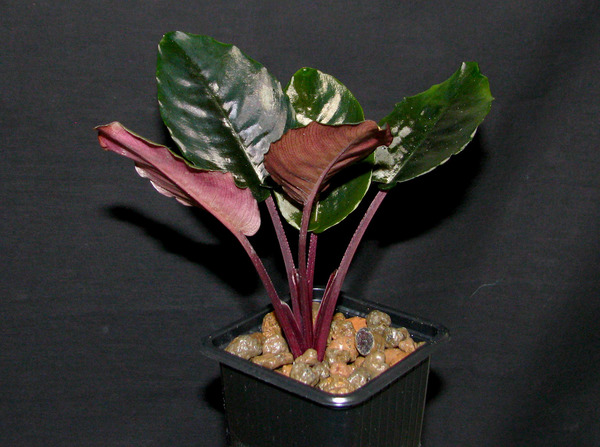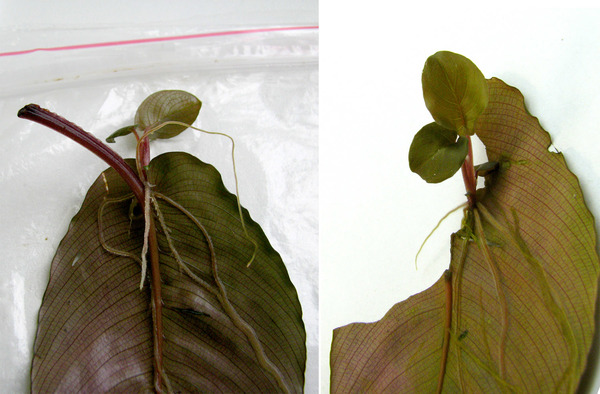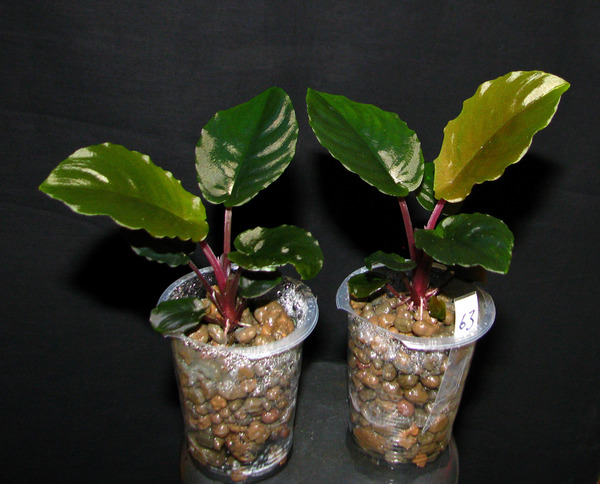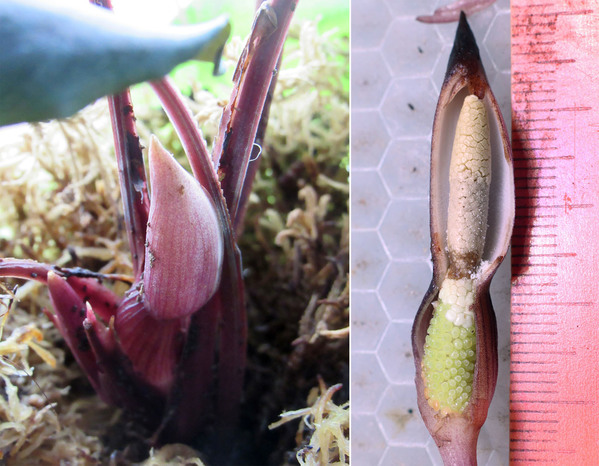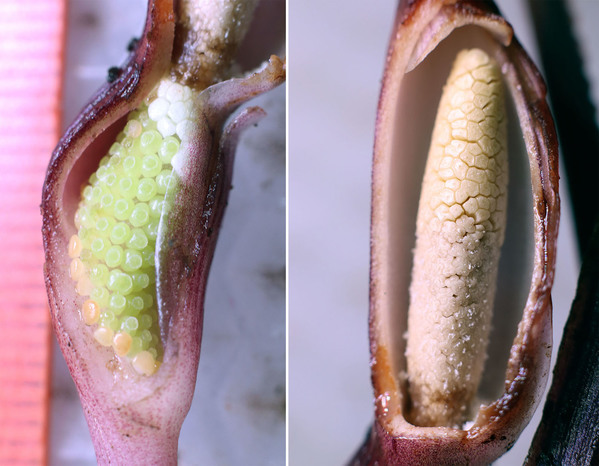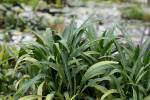Schismatoglottis metallica PIKACHU Is a Win-Win
For a long time I believed that Pikachu is a fictional creature that we can see only in computer games and cartoons, until I met it myself. Everything that Japanese designers had written about this Pokemon turned out to be true! Pikachu lives in flocks in the forests, and when its life is in danger, it falls to lots of small new Pikachus.
My Indonesian version of Pikachu has a red and green color (Photo 1), not that yellow which is typical for original character. Primarily, the tropical plant under the commercial name Schismatoglottis Pikachu (Schismatoglottis sp. "Pikachu") was discovered by the Japanese Kazuya Nakamoto in the forests of West Kalimantan about 10 years ago. Since that time, it has spread widely among hobbyists around the world due to its bright color. The reverse side of the leaves and petioles are rich crimson red, and the front side has a dark green color with a distinct metallic shine. This shine has given the plant its botanical name Schismatoglottis metallica S.Y.Wong et al. (now in press), a member of the Multinervia clade.
Photo 1. The cultivated specimen of Schismatoglottis sp. "Pikachu".
Three years ago, I planted my specimen in the far corner of my home paludarium and left it there for almost a year. During the next inspection of my home collection, I saw that the leaves of Schismatoglottis looked rather shabby than fresh. When I took the leaves up, I froze for a second in surprise: among the roots and leaf petioles, there were plenty of small Pikachus! Each plant had a fully formed root system and a few tiny leaves. Since the place was difficult to access, I could not define exactly how many new Schismatoglottis had appeared, but at least four. I planted one of them in another greenhouse. The plant began to grow quickly and, as soon as it reached a height of 20 cm, I gave it to the Moscow Botanical Garden.
One of my colleagues, Sergei Bodyagin, also conducted a series of experiments on the vegetative propagation of Schismatoglottis sp. Pikachu. Particularly, he cut off a couple of adult leaves from the plant and placed them in a plastic bag. After 5-6 months, new plants appeared on the leaves, and, like in my case, they already had several leaves and roots (Photo 2 and 3).
Photo 2. The the cut off leaves with new plantlets.
Photo 3. The plantlets after 6 months.
Vegetative propagation through adventive buds is widespread in the plant world. By the way, we have already written about a similar type of reproduction of Bucephalandra sordidula [1]. However, the vivaparity of Schismatoglottis sp. Pikachu has its own characteristics. Firstly, the initiation of the adventive buds occurs only when the mother plant is in danger. While Bucephalandra forms plantlets even on the leaves of healthy plants. Secondly, Schismatoglottis is able to form young plants not only on the central vein of the leaf, but also on its petiole or just a wound cut of the leaf plate. It is also important to note that only one bud starts growing on each cut leaf of Schismatoglottis until the daughter plant is separated. After separation of the seedling, its development accelerates remarkably.
Thus, Pikachu is a win-win for a terrarium or decorative paludarium. If the acquired plant does not take root on the first try, it will leave behind a rich legacy.
Despite some progress in vegetative propagation, the story of Schismatoglottis sp. Pikachu remained incomplete due to the lack of information about its inflorescence ... until March 5, 2022. That very day the staff of the botanical garden discovered on the specimen that I had given before a small inflorescence (about 5 cm) of the typical crimson red color (Photo 4 and 5). Schismatoglottis was already full of pollen, which hinted at the final stage of the bloom flowering (male anthesis). Since that time, the spatha did not open any more.
Photo 4. The inflorescence of Schismatoglottis sp. "Pikachu" at the male anthesis: with original spatha (on the left) and with cut spatha (on the right).
Photo 5. The inflorescence with cut spatha: female part (on the left) and male part (on the right)
Photographs by Sergei Bodyagin, Sergei Barinin, and Dmitry Loginov.
References
- Bodyagin, S, & Loginov, D. Bucephalandra: vegetative metamorphoses. Newslett. Int. Aroid Soc., 37(1)/2015, pp. 21–22.
Loginov, D. A. Schismatoglottis metallica PIKACHU Is a Win-Win. Newslett. Int. Aroid Soc., 44(1)/2022, pp. 9–10.
